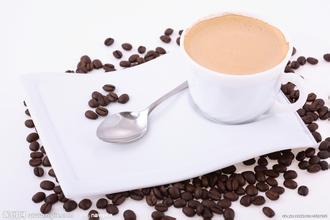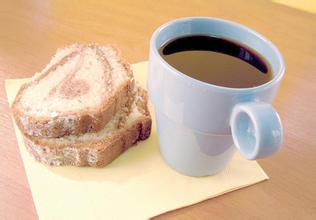Introduction of cappuccino coffee characteristic price, taste and flavor description method
Introduction of cappuccino coffee characteristic price, taste and flavor description method
Cappuccino coffee it tastes good, but its origin is more knowledgeable, and it has always been the best material for the study of character changes in Europe and the United States.
The history of the word Cappuccino is enough to show that a word is often extended to other meanings because it looks like something, far beyond the original intention of the creator. It sounds complicated. Take a look at the following analysis.
The monks of the St. Franciscan Church (Capuchin), founded after 1525, all wore brown robes and pointed hats. When the St. Franciscan Church spread to Italy, the locals thought that the monks' clothes were very special, so they gave them the name Cappuccino. The Italian word refers to the loose robes and small pointed hats worn by monks, derived from the Italian word "headscarf" or Cappuccio.
On the basis of Italian espresso, add a thick layer of foaming milk to become a cappuccino. The quality of espresso can be seen in milk and foam, but it is still an important factor in determining the taste of cappuccino. Pour the partially skimmed milk into a pot, then use a foamer to foam and inflate the milk, and let the milk be as uniform as whipped cream without burning. The cappuccino coffee cup should be warm or the milk foam will spread. You can usually put these cups on the top of the coffee maker to keep warm. Pour the milk and foam on top of the espresso and naturally form a layer, just like wrapping the coffee below. Note that the brewed Italian coffee is about five cents full, and the hot milk that has been foamed is about eight cents full. Finally, you can sprinkle a little cinnamon powder or chocolate powder and pour the rest of the milk together to make a delicious cappuccino.
Anyone who has drunk a cappuccino knows that his greatest feature is that the coffee is covered with foamed milk, and that layer of foamed milk is steamed. The coffee below is authentic espresso, because it is strong, so it is very mellow, with a sweet and bitter taste, but the milk foam above is sweet and delicious, you can eat two different flavors with only one price! And the bitterness and sweetness of cappuccino coffee is not at all abrupt, they are like the same nature, drink into your mouth, you will not feel uncomfortable, but feel very mellow, very delicious!

Important Notice :
前街咖啡 FrontStreet Coffee has moved to new addredd:
FrontStreet Coffee Address: 315,Donghua East Road,GuangZhou
Tel:020 38364473
- Prev

Italian coffee pull flower video tutorial process method introduction
The basic principle of milk foaming is to use steam to flush milk, so that liquid milk into the air, the use of milk protein surface tension, the formation of many small bubbles, so that liquid milk volume expansion, become foamy milk bubbles. During foaming, lactose dissolves in milk due to elevated temperature and is utilized
- Next

Introduction of classified Brand recommendation of Italian Coffee quantitative Bean Mill
Espresso quantitative grinder classification brand recommendation about coffee fat: a coffee friend once reported that our coffee was damp and watered. After checking the purchase records, we can see that the coffee friend bought Italian coffee beans, and Italy itself should have oil. The law of grease is like this: fresh, medium-and deep-roasted coffee beans will have grease on the surface, such as Italy, carbon roast
Related
- Beginners will see the "Coffee pull flower" guide!
- What is the difference between ice blog purified milk and ordinary milk coffee?
- Why is the Philippines the largest producer of crops in Liberia?
- For coffee extraction, should the fine powder be retained?
- How does extracted espresso fill pressed powder? How much strength does it take to press the powder?
- How to make jasmine cold extract coffee? Is the jasmine + latte good?
- Will this little toy really make the coffee taste better? How does Lily Drip affect coffee extraction?
- Will the action of slapping the filter cup also affect coffee extraction?
- What's the difference between powder-to-water ratio and powder-to-liquid ratio?
- What is the Ethiopian local species? What does it have to do with Heirloom native species?

